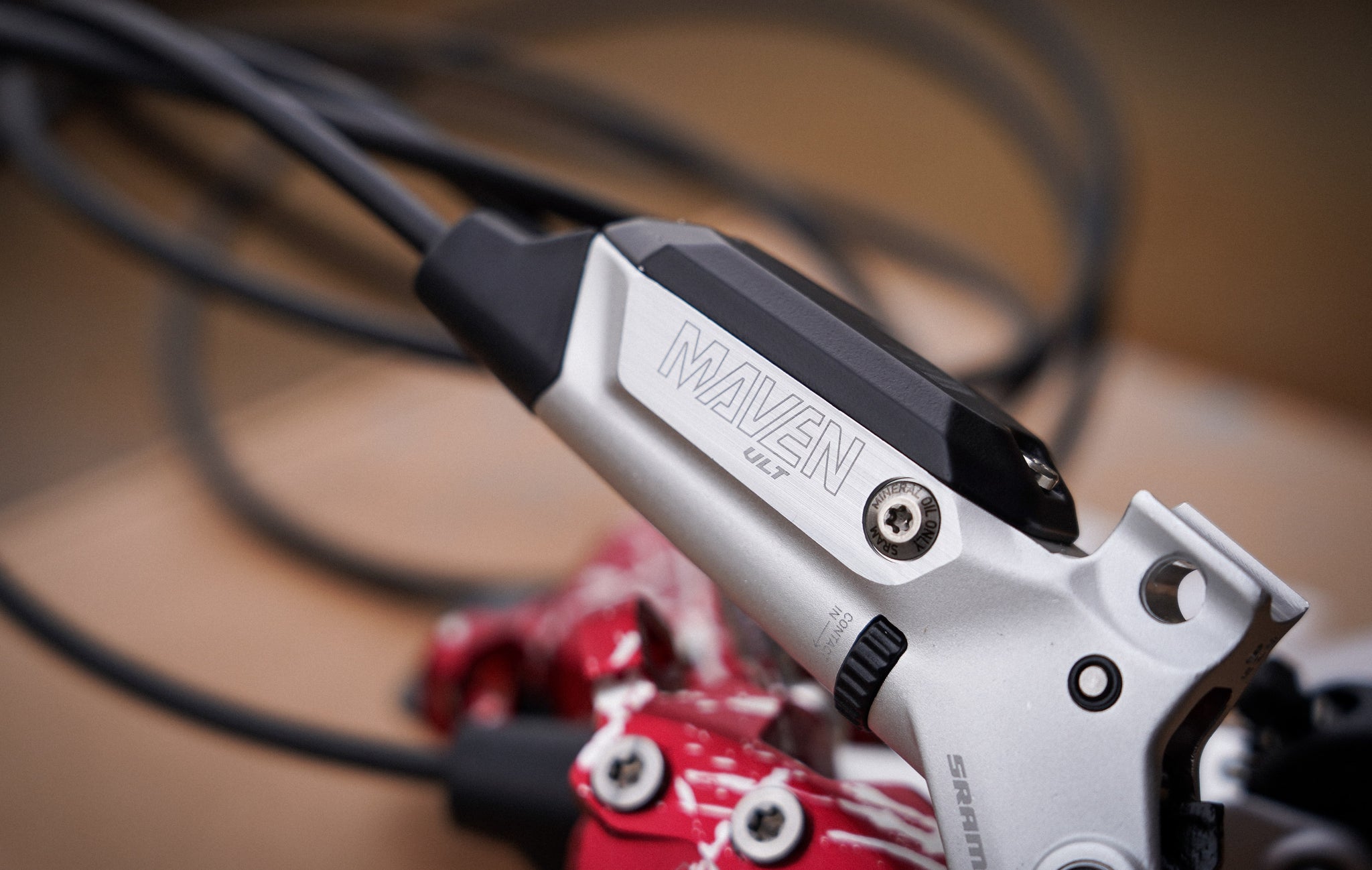
Unveiling A Powerhouse: SRAM Maven
When it comes to brakes, SRAM is one of the biggest players. However, over the last few years we've felt that SRAM really should have more tricks up their sleeve. In the SRAM brake lineup for the last bit, it has gone Level, G2, and then Code. The Levels have been the go-to XC brake, G2s are the trail brake and Codes are the more gravity/enduro-focused brakes. But in the last handful of years with terrain getting rougher and more technical, this hasn't always rung true. People have been putting Code brakes on everything, even their lighter trail bikes. And why not? Codes hardly weigh more than G2’s and have much better heat management and power. XC riders have been putting G2 four-piston calipers on their Level levers for almost two years now as well. Recently with the launch of SRAM Transmission, SRAM even made Level four piston brakes by attaching the new Level Stealth lever to a G2 caliper. Now, SRAM is adjusting accordingly and here comes their next trick. The G2 is being phased out, Codes become the trail-rated brake and SRAM released their all-new powerhouse gravity-oriented brake, SRAM Maven. If Levels are light duty and Codes are heavy duty then Mavens are naturally what SRAM calls “extreme heavy duty”.

The Down and Dirty
These new brakes have some super fun tech and a lot of changes, so buckle up for some crazy things!
- Mineral Oil-based
- Whoah! That's right, SRAM and mineral oil. In the past, all SRAM's mid to high-end brakes have all been DOT 5.1 regulated. The reason for this is unknown to most people. Most people think it is due to DOT fluid having a higher boiling point than mineral oil to keep a brake system feeling good over a long descent. And while this is true, the failure point of a brake system in a long descent is not fluid. The seals will give out well before the fluid boils. The reason for using DOT fluid is because it is so much more regulated. When the regulations on mineral oil are so lax, going to DOT fluid lets SRAM have fewer factors to worry about.
- But except for regulation, mineral oil is a fantastic system for brake systems. Mineral oil is easier to work with and hydrophobic as well. SRAM states that with these new Mavens, you are only supposed to use SRAM-specific mineral oil or Maxima mineral oil. (SRAM mineral oil is made by Maxima). Using only one company for their brake fluid lets them regulate it the same way they could with DOT fluid. This move to mineral oil lets the service interval of SRAM brakes move from 12 months to 24 months which is a welcome change. The Maven system still uses the SRAM “bleeding edge” tool that their other brakes do but it has a mineral oil-specific version. It will be anodized green instead of red to tell them apart and will be a 5mm port instead of a 4mm port. SRAM hammers home that the point of these brakes are power, along with control and tune-ability, which mineral oil lets them achieve.
- Small, Medium, Large, and Extra Large
- If you have been shopping for brake pads lately, you might have noticed that SRAM has changed its pad system to be more comprehensive. Small, Medium, and Large sizes hang on the walls. Small is for all current SRAM two-piston brake systems, road or MTB. Medium is for lighter trail brakes, so for Level Four pistons or G2s. Large is for bigger trail brakes, the Codes. With the introduction of the Maven, XL pads have been added to the line. Mavens are currently the only brake system that use the XL pads.
-
In addition to new pads, these brakes have new +20mm post-mount adapters for going up in rotor size with the 20p-1 and the 20p-2. These will be the new standard across the whole SRAM MTB line but are introduced with the Mavens. 20p-1 is to be used for any rotor that starts with a 1, so 160 or 180mm rotors. And the 20p-2 is for all rotors beginning with a 2, so 200 and 220mm rotors. Simple enough.

- The Brakes
- Maven brakes have much larger calipers and lever bodies than any other brake SRAM has made, in the effort for increased power. The caliper almost looks Moto-style with four caliper body bolts, to reduce any flex in the system. They use a Stealth-style brake lever, like the Levels and Codes from the last years. They are however, less “stealthy” than those brakes and not quite tucked as close to the bar as the Codes or Levels. SRAM knows gravity-oriented brakes are a lot less likely to go on a bike with headset routing.
- They still use the same hose kits as Codes or Levels, so getting parts should be simple.
- The new pistons are larger than the Codes and have updated seals from their Code line. The seals on this system take a lot more heat.
- In terms of power levels, these brakes are through the roof. Testing shows these brakes might be more powerful than TRP DRH EVOs or Magura MT7s, and definitely Codes. People who have been riding these brakes at SRAM claim they have had to step down in rotor size due to the brake's sheer power.
- With that theme of tune-ability, SRAM wants these Maven brakes to have 26 points of lever throw adjustment and 90 points of contact point adjustment as well. That's almost too much!
- Special Editions
- The Mavens have a special edition brake set with red/splash-colored calipers, available with the launch of these brakes. There are 2500 sets total worldwide and we received a handful of them. The special edition set is the same price (one dollar cheaper actually) as the standard Maven Ultimate brake sets. The special edition not only contains a set of the Maven Ultimates but 4 rotors: 1 x 220, 2 x 200, and 1 x 180. Also, two sets of pads, post mount +20mm adaptors and a bleed kit.
-
Besides the special edition, they follow the same categories as the other SRAM brakes. Ultimate is the top end, then it goes Silver and then Bronze. As you go down the line you lose Ti bolts and some adjustment and tunability.
